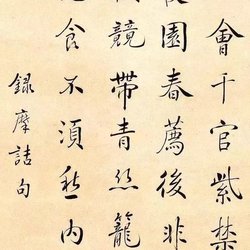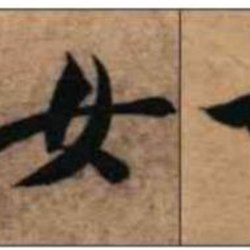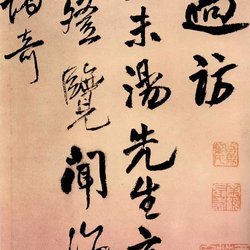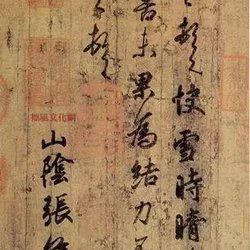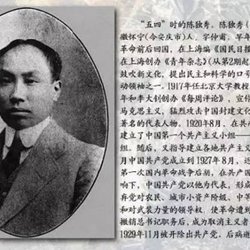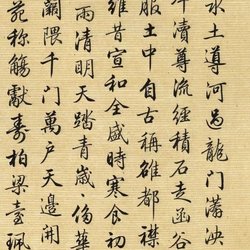There is a saying: Don't let poverty limit your imagination.
In fact, poverty of vision will also limit a person's imagination of calligraphy.
So how can we improve our horizons and enhance our appreciation of calligraphy?
First, let’s talk about the four realms of appreciating calligraphy works. Please take a seat:
Not yet started: I can’t feel the beauty of a calligraphy work. This is not surprising. When we were in the sixth grade of elementary school, we were taking a writing class, and one of my classmates couldn't tell the difference between the printed fonts in the writing textbook (it was regular script printed in Tianzi grid) and the fonts on the teacher's copybooks. , he thought it was the same. I think the main reason is that I have received too little exposure to calligraphy. Strictly speaking, this cannot be regarded as a state of appreciating calligraphy, because there is no appreciation at all.
getting Started: I can feel the beauty of a calligraphy work, but I can’t tell what’s good about it. This should be the level of most people in life. SeeMore mainstream worksBeing able to enjoy beauty feels like a good word, but if you want to ask where it is, the answer you get is mostly "it just feels pretty good", and you can't explain why. This is mainly due to the lack of ideas or skills in appreciating a calligraphy work. The easiest way to judge whether you are a beginner is to read Wang Xizhi's "Preface to the Lanting Collection". If you find it pleasing to the eye, then congratulations, you are at least a beginner.
Advanced: Not only can you feel the beauty of a calligraphy work, but also know what is good about it. People who can tell what is good about a work should have learned certain knowledge of calligraphy (such as mastering the way to hold a pen, understanding the characteristics of different calligraphy styles, knowing the rules of tying words, etc.) and have certain artistic accomplishments in calligraphy (such as copying I have studied famous inscriptions on inscriptions, read calligraphy works, tried my own creation, etc.), and mastered the idea of appreciating calligraphy works. Since calligraphy education is not compulsory in our country, most people who can master certain calligraphy knowledge and accumulate certain calligraphy skills are those who have a strong interest in calligraphy.
Advanced: Be able to fully appreciate a calligraphy work and know its strengths and weaknesses. A person at this level should have relatively rich calligraphy knowledge and profound calligraphy art cultivation, so that he can comprehensively analyze a work and even discover the flaws in famous calligraphy, so as to eliminate the rough and select the essence. Are there also failures in famous posts? Of course, even the most famous calligraphers cannot achieve perfection in every word. For example, the word "green" in "Dongyue Qingqiu" in Ouyang Xun's "Jiucheng Palace Liquan Inscription" is as shown in the figure (taking Song rubbings as an example):
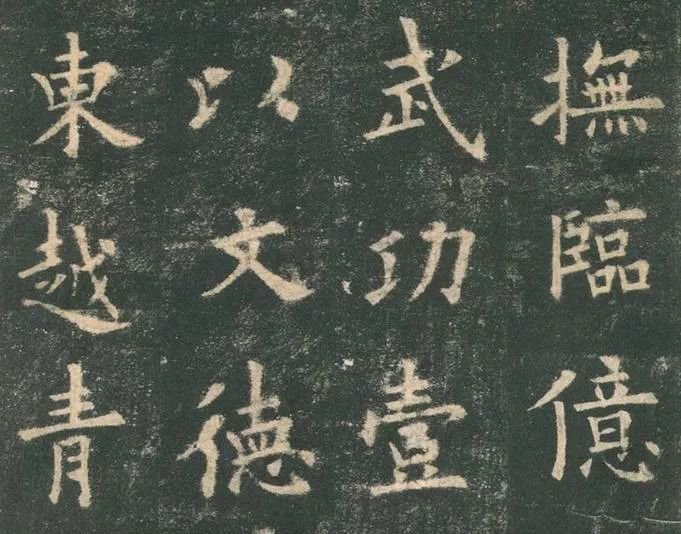
Did you find anything inappropriate? If you observe carefully, you can find that the two horizontal strokes of the "moon" in the lower part of the character "青" are abnormally connected to the strokes on the right, while the normal writing method should be connected to the long stroke on the left. This is because the author is writing " When the left side of the character "月" is written with a long left stroke, it goes too far to the left, so that the two horizontal strokes in the middle have to be made up by the strokes on the right. If it is still connected with the long left stroke, the character "月" will not be on the center line and will be lost. Balanced.
In order to let everyone see the difference between this word and the usual way of writing more intuitively, I found another word "Qing" in this stele (because there is only one word "Qing" in the whole text of this stele, I used the word "Qing" instead). You can carefully observe the difference in the glyphs of the word "月" in the two characters, as well as the glyphs on the left of the two characters "月"longWith the upper part of the character "青" "下"short verticalI believe we can see some clues from the difference in their relative positions.
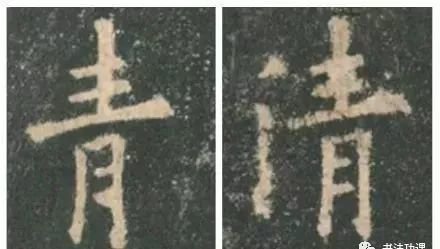
Let’s talk about the specific methods of appreciating calligraphy.
When we appreciate a work, it is like appreciating a woman. There are often three situations:
1. It looks good at first glance, but cannot stand a closer look; (the calligraphy is good, but the stippling is not precise);
2. The effect is good at first glance, but not bad upon closer inspection; (the composition is average, but the stippling is exquisite);
3. At first glance, the effect is good. If you look closer, look carefully, and look at it for a long time... it is indeed a good work, and the more you look at it, the more interesting it becomes and the connotation is very rich. (The breath is good, the composition is good, and the stippling is also exquisite).
So, do you like the "women" in your works? So, here comes the key!
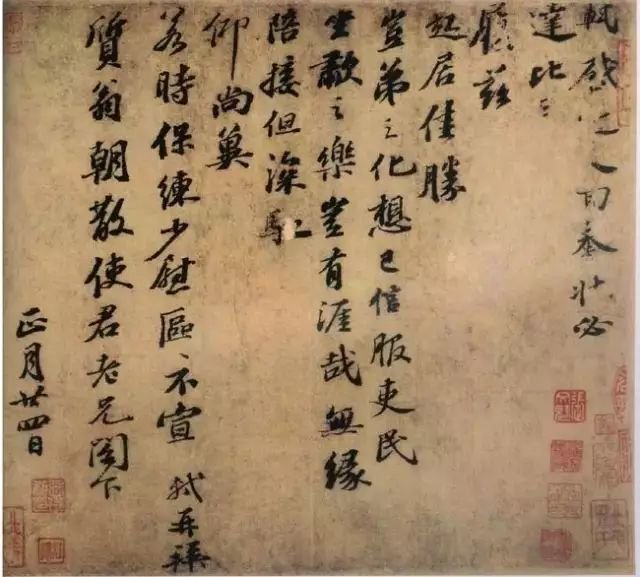
1. Discipline (clothing, grooming)
When appreciating a calligraphy work, from the aspect of "form and quality", the first element is the composition, followed by the analysis of the knotting and brushwork (stippling). Therefore, composition is also an important part of the art of calligraphy. The rules and regulations are like the design plan before building a building. If the plan is not up to standard, construction will not be possible. Therefore, before writing a work, you should first be familiar with the content of the work, and make a rough plan based on the number of words and the location of the signature, so that you can be confident.
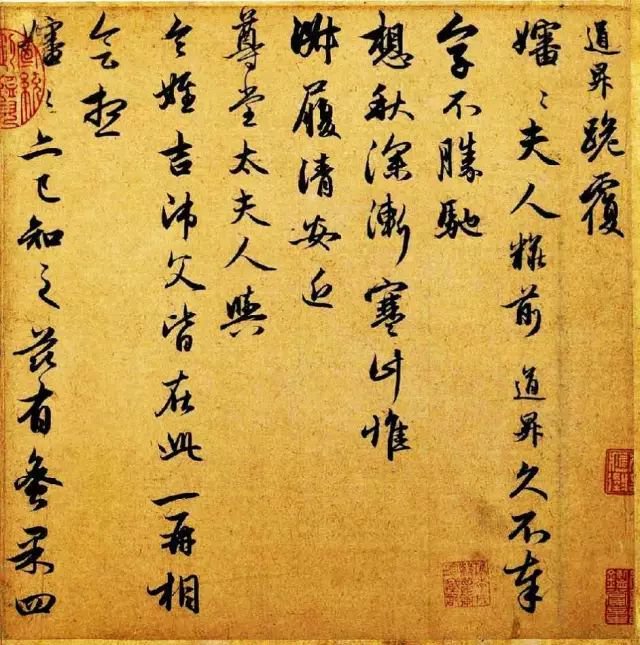
2. Knot (height, curve)
The quality of knots can reveal an author's modeling ability. The structure of each Chinese character has their general pattern, but there is no definite formula. On the basis of not violating the calligraphy, everyone can use their imagination to create wonderful structures.
The knot characters in calligraphy also have their own general artistic rules, such as the density contrast of pointillism, the combination of length and shortness, the contrast of thickness, the combination of odd and positive, etc. A good knot is like the graceful movements in gymnastics. The close cooperation between two people in dance is full of fun and brings people unlimited wonderful enjoyment. "Gu" and "San" in "De Shi Tie", and 20 "Zhi" characters in "Lanting Preface". "Qing" and "Fang Qi" in "The Manuscript of Sacrifice to My Nephew".
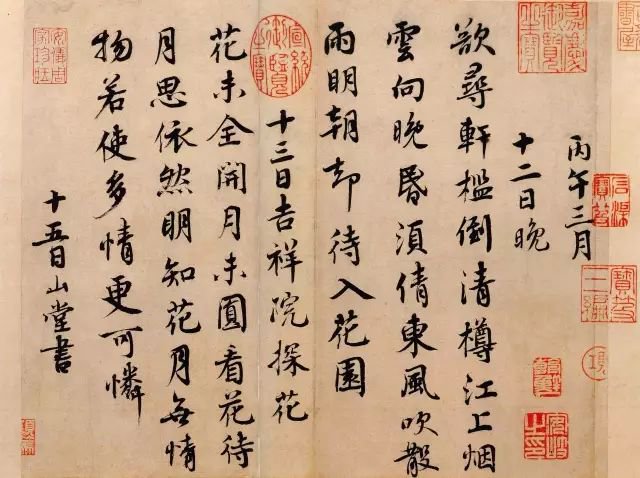
3. Point painting (facial features, skin texture)
Pointillism is the most basic element in calligraphy. It is impossible to write a good calligraphy work if you cannot write dot paintings well. (For example, building materials)
The ability to write dots well has a lot to do with the use of pens. Sophisticated, sophisticated, complete, varied, interesting, and energetic pointillism is based on relatively reasonable brush usage, scientific training, and proficiency. Exquisite pointillism also has high appreciation value.
The ancients described dot painting as follows: 1. The dots are like falling rocks from a high mountain; 2. The horizontal lines are like clouds forming thousands of miles away, and the juxtaposition of several horizontal lines should be full of changes in brush strokes, back direction, length, etc.; 3. The vertical lines should have the distinction of hanging needles and hanging dews; 4. The continuous curves written in cursive script should be like century-old dead vines, vigorous and powerful; 5. The rounded lines should be like broken hairpin strands, round and elastic, etc.
Of course, the art of calligraphy, if it is purely about writing, will not be considered high quality. Calligraphy is always passed down from person to person, and most of the calligraphers passed down through the ages have also made achievements in other areas. For example, Wang Xizhi and Yan Zhenqing are both generals; Su Dongpo is a great writer; Zhao Mengfu and Dong Qichang are both great calligraphers and painters; Wu Changshuo, Huang Binhong, Qi Baishi are all masters of poetry, calligraphy, painting and sealing, etc. Therefore, appreciating a calligraphy work should also be connected with the author's basic situation.
In short, calligraphy appreciation is affected by many factors, the secrets of which cannot be explained clearly in a few words. It takes long-term observation, research, and practice to explore the three flavors.

